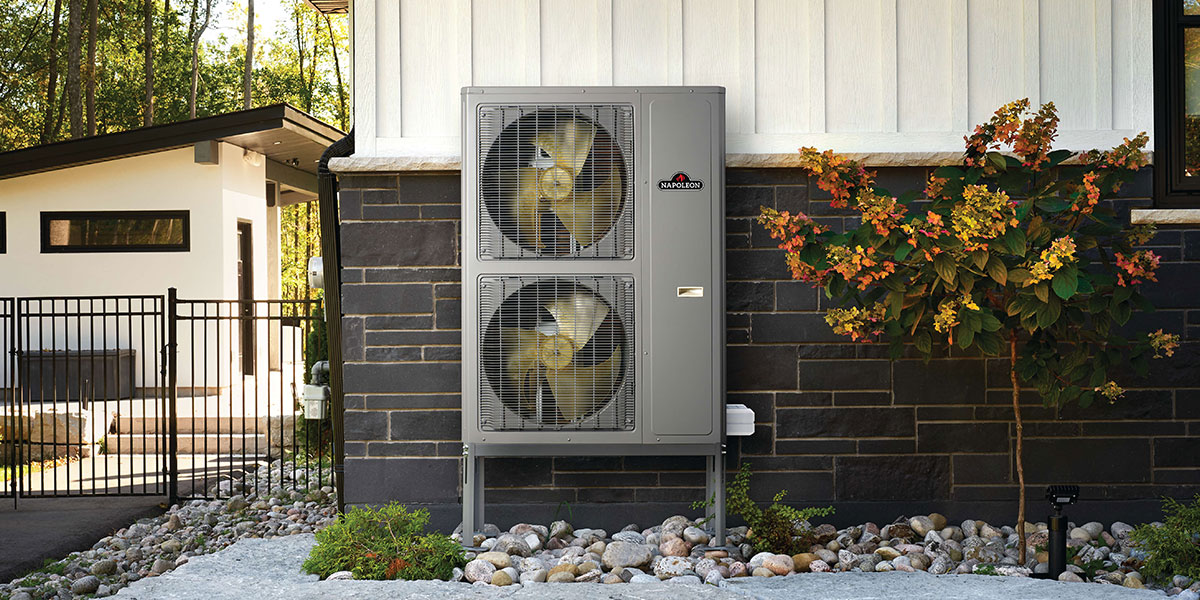
What is a Heat Pump | How Does it Work?
A heat pump is part of your home’s heating and cooling system. It is installed outdoors and works similarly to a central air conditioner. However, while an air conditioner only cools the house, a heat pump can also provide warm air to the home. A heat pump is powered by electricity and uses a refrigerant system to provide heating and cooling throughout the year.
All in One System
Because a heat pump warms and cools, homeowners do not need to install separate systems. Instead, they can rely solely on a heat pump (although homeowners in freezing climates might find supplemental heating helpful).
Unlike a gas furnace, a heat pump does not burn fossil fuels, making it an environmentally friendly, energy-efficient method of heating and cooling the home. Let’s learn a bit about how a central heat pump works.
Types of Heat Pumps
The two most common types of heat pumps are air-source and ground-source. Air-source heat pumps are the most popular for residential heating and cooling due to their lower price. They work by transferring heat between indoor air and outdoor air. Ground-source or geothermal heat pumps are more expensive to purchase and install but typically have a lower operating cost and are more efficient. They work by transferring between indoor air and the ground outside.
Components of a Heat Pump
An air-source heat pump consists of two major components, an indoor unit and an outdoor unit, each with various subparts:
Outdoor Unit:
The outdoor unit contains a coil and a fan. The coil operates as a condenser or an evaporator, depending on which mode the heat pump operates. The fan blows outside air over the coil to facilitate the heat exchange.
Indoor Unit:
The indoor unit, commonly referred to as the air handler unit, is like the outdoor unit in that it contains a coil and a fan. The coil operates as a condenser or an evaporator, depending on which mode the heat pump operates. The fan moves air across the coil and through the ducts in the home.
Refrigerant:
Refrigerant is the substance that absorbs and rejects heat as it circulates through the heat pump system.
Compressor:
The compressor pressurizes the refrigerant and moves it through the heat pump system.
Reversing Valve:
The reversing valve reverses the flow of the refrigerant, allowing the heat pump system to switch between heating and cooling.
Expansion Valve:
The expansion valve acts as a metering device, regulating the flow and temperature of the refrigerant as it passes through the heat pump system.
How a Heat Pump Works
A heat pump operates by redistributing heat from the air (or ground in the case of a ground-source heat pump) and using refrigerant circulating between the indoor and outdoor units to transfer heat. When an air-source heat pump is in cooling mode, it absorbs heat inside the home and releases it outdoors. When a heat pump is in heating mode, it absorbs heat from outside and releases it indoors. Here is how the heat pump system works when it is operating in cooling mode:
-
The liquid refrigerant is pumped through the expansion valve in the indoor coil, which acts as the evaporator. Air drawn from inside the house is blown across the coils, where the refrigerant absorbs heat energy. The cool air is then blown through the ductwork in the home.
-
The gaseous refrigerant then passes through the compressor, which pressurizes the gas and causes it to heat up. The pressurized refrigerant then moves through the heat pump system to the coil in the outdoor unit.
-
A fan in the outdoor unit moves outside air across the coils, serving as condenser coils in cooling mode. Since the outside air is cooler than the gas refrigerant, heat is transferred from the refrigerant to the outside air. The refrigerant condenses back to a liquid as it cools and is pumped through the system to the expansion valve in the indoor unit.
-
The expansion valve reduces the pressure of the liquid refrigerant, which significantly cools it. It is then ready to be pumped back to the evaporator coil in the indoor unit and restart the cycle.
The cycle is the same in heating mode, except the refrigerant flow is reversed using the reversing valve. Then the heating source becomes the outside air (even when the air temperature is very low), the outdoor coil functions as an evaporator, and the indoor coil functions as a condenser. As a result, warm air is released throughout your home.
A heat pump is an effective way to cool and heat your home using one central system. A Napoleon expert can help evaluate your heating and cooling requirements and recommend a heat pump that will work for your needs.
